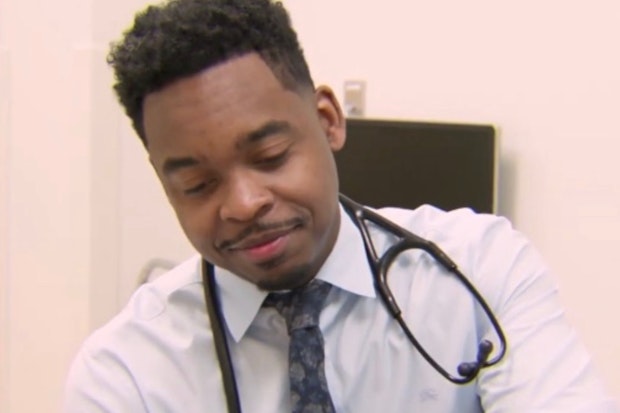
By Jabraan Pasha, Associate Professor of Internal Medicine and Assistant Dean of Student Affairs, University of Oklahoma School of Community Medicine
The first patient I met this year was a 47-year-old whose first two words to me were, "You're Black." No one had ever said that, exactly, to me -- not with words, anyway. They had definitely given me looks that said those words.
Those two words weren’t spoken with shock or surprise, they were spoken with what felt like relief. As a 47-year-old Black woman who had never had a Black doctor, I cannot help but wonder if she felt like she may finally be heard.

The research supports that notion. Studies have suggested that the biases of non-Black physicians can result in both less time being spent, and less time listening to Black patients, when compared to White patients. It also showed that non-black physicians spend more time talking when interacting with Black patients, as compared to White patients. This study and others like it, validate the beliefs of many Black patients that feel unheard by their doctors, which can often lead to avoidance of health care.
Possibly more concerning is the research that clearly shows that minorities suffer worse clinical outcomes when cared for by non-minority physicians. A 2021 study even showed Black newborns had increased mortality when cared for by non-Black pediatricians. Simply put, Black and Brown people are dying due to the lack of doctors that look like them.
With the Association of American Medical Colleges' recent report showing that Blacks and Hispanics make up just 5.4% and 5.3% of American physicians, respectively, the lack of representation is glaring. Given the broad impact this issue has on communities of color across the nation, urgent action is necessary. As is the case with climate change, gun violence and other pressing issues, it is time we recognize the lack of Black and Brown physicians in our country as a public health crisis.
This is an all-hands-on-deck problem that requires both short and long-term solutions. We must recognize that it is imperative to educate current physicians on how to care for diverse patient populations, through cultural humility and implicit bias training. Understanding the factors that stand as barriers to quality care for underrepresented minority patients is the responsibility of the people within the health care system and critical to mitigating health disparities. However important, this step does not address the root cause of the issue at hand. The most critical solutions are those that will increase the number of underrepresented minority physicians.
Deep-rooted systemic racism and economic inequality has resulted in a dearth of opportunities for communities of color that has left the pipeline of underrepresented minority physicians lacking. A critical intervention is the devotion of resources to the continued development of a pipeline that creates opportunities for those who have been historically shut out. Pipeline programs that expose Black and Brown children to STEM and health care, as early as kindergarten, can cultivate an interest in medicine and create opportunities that lead to future academic success.
Although foundational, addressing the pipeline issue is not the panacea. While arguably the most important long-term solution, it is just that, a long-term solution and we need immediate interventions, as well. As the gatekeepers of medicine, medical schools have the unmatched ability to make an immediate impact. Admissions policies that allow for the admission of classes of students that better mirror the communities the medical schools serve, is critical if they are to live up to their missions of providing the best care possible for their community.
Even though my first patient of 2022 may have been the first person to overtly comment on the rarity of having a Black doctor, double takes and suggestive comments that effectively say the very same thing, continue to be a regular part of my experience. As long as my existence as a Black physician is noteworthy, communities of underrepresented minorities’ health will suffer.
___________________________________________________
The views and opinions of the author are their own and do not necessarily reflect those of the Aspen Institute.

